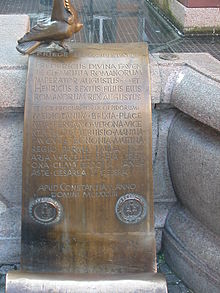Peace of Constance

The Peace of Constance[1] of 1183 was signed in the city of Konstanz by the Hohenstaufen emperor Frederick Barbarossa and representatives of the Italian Lombard League.
The agreement confirmed the 1177 Treaty of Venice. The cities in the Kingdom of Italy retained several regalia of local jurisdiction over their territories, and had the freedom to elect their own councils and to enact their own legislation, as well as to keep their Lombard League alliance. Yet their consuls had to take the oath of fealty to the Holy Roman Emperor and receive the investiture from him, Imperial judges had the prerogative to judge appeals and some districts in Italy were placed under direct Imperial administration.
The cities stopped fulfilling their obligations during the long struggle for the Imperial crown that followed the death of Frederick's son Emperor Henry VI in 1197, and the Peace of Constance was at the centre of the new conflict fought between the so-called second Lombard League and Emperor Frederick II between 1226 and 1250. It was celebrated for the rest of the Middle Ages and beyond as the only Imperial recognition of the autonomy of a large group of Italian cities.
Notes
Sources
- G. Raccagni. 'Il diritto pubblico, la pace di costanza e i <<libri iurium>> dei comuni lombardi', in D. Quaglioni- G. Dilcher (eds), in Gli inizi del diritto pubblico, 2, da Federico I a Federico II (Bologna-Berlin, 2008) 309-40. [1]
- G. Raccagni. 'The teaching of rhetoric and the Magna Carta of the Lombard cities: the Peace of Constance, the Empire and the Papacy in the works of Guido Faba and his leading contemporary colleagues', Journal of Medieval History, 39 (2013), 61-79. [2]
- Norwich, John Julius. The Kingdom in the Sun 1130-1194. Longmans: London, 1970.
